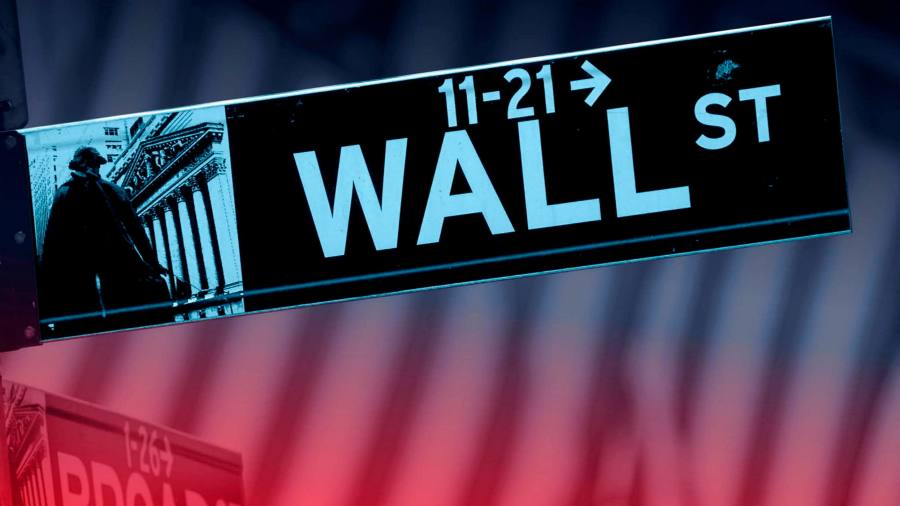Good morning. Stocks are up year to date, and bonds are too. We’re feeling uncharacteristically cheery. So it seemed like a good day to look back at the dark year 2022. Email us with your 2023 expectations: [email protected] and [email protected].
2022 stock pick postmortem: luck > skill
To begin with the good news: Unhedged did not humiliate itself in FT Money’s 2022 stock picking contest. Our five-stock portfolio returned a positive 12 per cent for a period when the S&P 500 fell 14.4 per cent (the starting gun for the contest went off in February, and the race ended with the year). Twenty-six points of outperformance! Better still, Ethan’s personal picks were up 13.1 per cent, good enough for third place among all FT journalists. We are heaped with laurels, at least superficially.
The bad news is that — like a lot of one-off successes in finance — the patina of intelligence and foresight on the Unhedged portfolio proves thin when exposed to critical scrutiny (Ethan’s portfolio looks a bit better).
The Unhedged portfolio consists of five short positions. Now, if I invest in an all-short active fund — as a hedge position within a larger portfolio, say — and the stock market is down on the year, I would expect that my short fund would be up by more than the market is down. Otherwise, I would just hedge by buying some puts on the S&P, something similar. I expect the manager of my short book to be smart, in other words, not just a dart-throwing chimp. Looked at that way, it is more correct to say the Unhedged portfolio trailed the market.
Before looking at how we thought each pick would work, and how it did in fact work, some context. The rules are that each contestant can pick five stocks, long or short. They are equally weighted; currency and dividends don’t count; the return clock started ticking on February 7. Here is how I described Unhedged approach to the game (you can see the original write-up here):
The point of stock picking contests is not to maximise expected returns. It is to maximise expected glory, while minimising expected humiliation. That is to say, all that matters is coming in first, not coming in last, and looking clever doing it.
Mission accomplished, I guess? Here are the five shorts, with their returns:
-
Comerica Inc (a highly rate-sensitive regional bank): -32 per cent
-
Infineon Technologies (chips, Germany): -21 per cent
-
News Corp (digital and print media conglomerate): -19 per cent
-
GameStop (retail): -28 per cent
-
Cenovus energy (oil and gas, Canada): +34 per cent
The strategic justification for the picks was that we needed an out-of-consensus macro view in order to differentiate ourselves from the pack. Here is what we chose:
For purposes of our portfolio, we are betting that as we exit 2022, global growth and inflation is positive but very low, and the credit cycle is normalising — that is, credit spreads keep rising toward historically normal levels. The Fed, under this scenario, will not do all five interest rate increases the market now expects, and will not start selling its portfolio of Treasuries, instead letting the balance sheet run off slowly. Call this the “new new normal” thesis.
Banks, cyclicals, and energy stocks are going to do poorly under those circumstances, and we have expressed that view with short positions on companies that are particularly sensitive to rates or economic conditions, or which have prospered for idiosyncratic pandemic-related reasons
Things did not pan out this way. Rates are not falling yet, inflation is still high, the Fed has not quit early. But — luckily — the work that would have been done by the return of low rates and growth has been done by fears of a Fed-induced recession, so four of the five picks did great. A much dumber strategic approach would have worked just as well: “Fed tightening will push the market down, let’s short high-beta stocks.”
Only two of the picks fell for the reasons we thought they would. We wrote that “Infineon shares have had a great pandemic run, but they look expensive, and if the economy slows even as production bottlenecks abate, the current chip shortage could flip into a glut.” Nailed it! On GameStop: “A debt-ridden business in a structurally declining industry whose stock exploded overnight mostly on speculation . . . $100 a share is still preposterously expensive.” Ding!
With Comerica and News Corp, by contrast, we were just lucky. High beta shorts, a down year, the end.
Finally, a massive blunder: shorting an energy stock. We thought oil prices would roll over. They did. We also thought this would take energy stocks — especially high-cost producers such as Cenovus — with them. It didn’t. The oil price aside, the global energy market is still tight, with serious risks to supply. What is infuriating about this pratfall is that I discussed the pick beforehand with Derek Brower, the FT’s US energy guru, and he told me this is exactly what would happen. I ignored him. That was very dumb.
Ethan’s glorious third-place portfolio
My romping third-among-the-journos performance came down to listening to someone smarter than I, namely the 2021 stockpicking contest winner. Here he is a year ago:
In case he repeats his extraordinary performance, our 2021 winner Petru David from Romania is worth listening to. “No, the bubble hasn’t popped,” he said. “The same stuff that was expensive last year is expensive now. I don’t think the market has corrected enough.”
If only I’d listened more! My picks, bundled together as the Unhedged Pure Speculation Fund, combined three short bets against some of 2021’s highest-profile excesses, which did great, along with two wild card longs, which did terribly. Here are the returns:
-
Short Digital World Acquisition Corp: 82 per cent
-
Short GameStop: 28 per cent
-
Short AMC: 56 per cent
-
Long Netflix: -27 per cent
-
Long Peloton: -73 per cent
DWAC, in case you’ve forgotten, is the blank-cheque company tasked with acquiring Donald Trump’s social media firm. Its stock peaked at nearly $100 last year; now it’s under $20. This was an easy lay-up. The underlying business, Truth Social, is entering a saturated market of conservative social platforms with the flimsy competitive edge of being where Donald Trump posts. Its financial projections are pure fluff. And that’s assuming the deal even closes. It has been delayed until September, and the SEC is smelling potential securities fraud.
(See Rob’s segment above for our case against GameStop and, by extension, AMC.)
On a less glorious note, the Netflix and Peloton longs both feel foolish now, reflecting a bad judgment about equities’ downside potential. As the venture capitalist Bill Gurley put it last April:
Previous “all-time” highs are completely irrelevant. It’s not “cheap” because it is down 70%. Forget those prices happened.
This was just my mistake with Peloton. After falling some 85 per cent from its peak when I picked it (though to a still-rich 25 p/e multiple), I saw potential for a turnround by year’s end. New management might come in to cut costs, or Peloton could get bought. Apple, Amazon and Nike were among the suspected suitors. But no acquisition occurred, and though the new CEO, Barry McCarthy, has made sensible changes such as outsourcing production, he is trying to transform its asset-heavy business model into something more fleet-footed, a very big task indeed. As losses widened, the stock kept sinking.
Overconfidence in Netflix is a mistake Unhedged has written about many times over, so I won’t rehash it all, except to say that its brutal correction has been intellectually useful in forcing us to ditch faulty assumptions. In that sense, I’m happy with my stockpicking results this year: good enough to place top three, and beat the official Unhedged basket, but bad enough to remind me how hard it is to get things right. (Ethan Wu)
Call for your 2023 stock pick ideas
We encourage everyone to join FT Money’s 2023 contest; you can do so here. The deadline is next Sunday. More importantly though, we hope you will email with you best ideas, so we can steal them. We’ll give you the credit, of course.
One good read
James Mackintosh on the 60/40 portfolio.
Read the full article here



